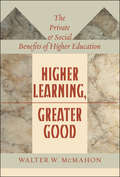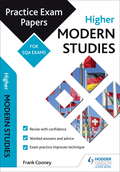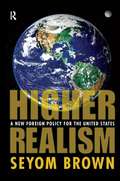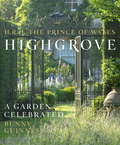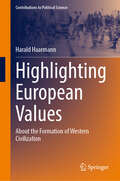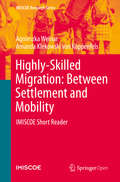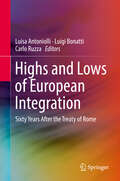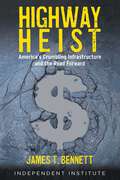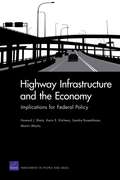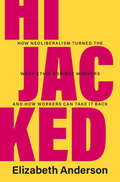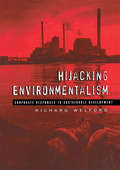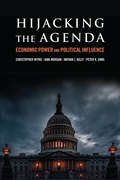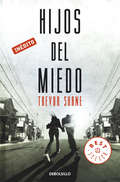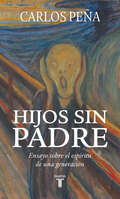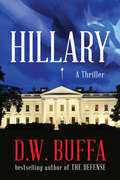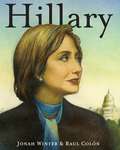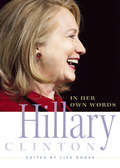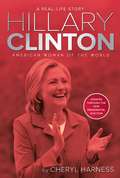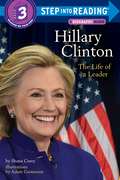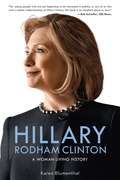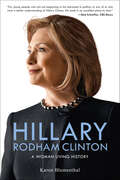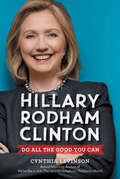- Table View
- List View
Higher Learning, Greater Good: The Private and Social Benefits of Higher Education
by Walter W. McMahonThe chronic underinvestment in higher education has serious ramifications for both individuals and society.Winner, Best Book in Education, 2009 PROSE Awards, Professional and Scholarly Publishing Division, Association of American PublishersWinner, Best Book in Education, PROSE Awards, Professional and Scholarly Publishing Division, Association of American PublishersA college education has long been acknowledged as essential for both personal success and economic growth. But the measurable value of its nonmonetary benefits has until now been poorly understood. In Higher Learning, Greater Good, leading education economist Walter W. McMahon carefully describes these benefits and suggests that higher education accrues significant social and private benefits. McMahon's research uncovers a major skill deficit and college premium in the United States and other OECD countries due to technical change and globalization, which, according to a new preface to the 2017 edition, continues unabated. A college degree brings better job opportunities, higher earnings, and even improved health and longevity. Higher education also promotes democracy and sustainable growth and contributes to reduced crime and lower state welfare and prison costs. These social benefits are substantial in relation to the costs of a college education. Offering a human capital perspective on these and other higher education policy issues, McMahon suggests that poor understanding of the value of nonmarket benefits leads to private underinvestment. He offers policy options that can enable state and federal governments to increase investment in higher education.
Higher Modern Studies: Practice Papers for SQA Exams
by Frank CooneyPractise for your SQA exams with three specially-commissioned Hodder Gibson Practice Exam Papers.- Practise with model papers written and checked by experienced markers and examiners- Get extra advice with specially-written study-skills guidance sections- Gain vital extra marks and avoid common mistakes with examiner tips
Higher Realism: A New Foreign Policy for the United States
by Seyom BrownFor dealing with an increasingly chaotic and violence-prone world, Higher Realism offers a grand strategy that rejects the imperial thrust of recent U.S. foreign policy as well as the conventional "realist" approach of focusing only on U.S. interests. The emerging world order is one in which many powers of various sorts-states and nonstate actors, large and small, allies and adversaries-have an essential role. Seyom Brown calls this the emergent international "polyarchy," and argues that neither the assertive interventionism of the neoconservatives nor the cool, nonideological geopolitics of the conventional realists is the appropriate response. Instead, responsive to how U.S. interests have become inextricably bound up with world interests, Brown proposes a foreign policy of higher realism centered on cooperation to ensure the security and well-being of all. Brown defines and analyzes those common interests in the environment, peace and security, health and economic vitality, human rights and democracy, and transnational accountability. He faults the arrogant assumption that what is good for the United States is ipso facto good for the world, insisting rather that U.S. policies for global development must respect religious and cultural diversity. Brown's approach transcends the traditional dichotomies of realism versus idealism and self-interest versus altruistic morality. The recommended programs and policies are designed to help a new U.S. presidential administration reformulate a foreign policy that will ensure national security and promote international well-being: higher realism in philosophy and practice.
Highgrove: A Garden Celebrated
by HRH The Prince of Wales Bunny GuinnessHIGHGROVE: A GARDEN CELEBRATED is a commemoration of the beautiful, mature gardens planned and planted by The Prince of Wales over thirty years ago. The gardens at Highgrove evoke intense emotion. In January, the dramatic light and early snowdrops of the Stumpery are exquisite; the glistening emerald lawns and tree blossoms in Spring lift the spirits with a promise of what is to come; in Summer, the longed-for delphiniums in the Sundial Garden stand proudly to attention and dramatic leaf colours welcome Autumn to the Arboretum as the harvesting in the Kitchen Garden begins. In Winter the structural elements of the garden have their moment of glory as the year comes to a close and the cycle of the seasons continues.Lavishly illustrated with photographs that capture both the light and detail of this magisterial space, this beautiful book will delight and inspire gardeners of every level. It is an exquisite celebration of garden design, passion and inspiration.
Highlighting European Values: About the Formation of Western Civilization (Contributions to Political Science)
by Harald HaarmannThis book sheds light on the achievements of the Old European civilization, also known as the Danube civilization, which flourished between 6000 and 3000 BCE. Contrary to popular belief, many elements attributed to Greek origins stem from this pre-Greek culture. Modern research reveals that ancient civilizations developed along two distinct paths: communitarian administration without social hierarchy, as seen in the Danube and Indus civilizations, and state models with hierarchical structures, exemplified by Sumerian and Egyptian cultures. This book highlights how the values and innovations of Old Europe laid the foundation for Greek civilization and, subsequently, Western civilization. By exploring these roots, the study provides modern Europeans with a deeper understanding of their heritage and the diverse origins of their cultural values. The book will appeal to scholars, researchers, and students of political science, history, cultural studies, and anthropology, as well as to everyone interested in a better understanding of European heritage, its values, and the Danube civilization.
Highly-Skilled Migration: IMISCOE Short Reader (IMISCOE Research Series)
by Agnieszka Weinar Amanda Klekowski von KoppenfelsThis open access short reader discusses the emerging patterns of sedentary migration versus mobility of the highly-skilled thereby providing a comprehensive overview of the recent literature on highly-skilled migration. Highly-skilled migrations are arguably the only non-controversial migrant category in political and public discourse. The common perception is that highly-skilled migrants are high-earners with top educational skills and that they are easy to integrate. These perceptions make them a “wanted” migrant. There seems to be however a big divide between the popular perceptions of this migration and its realities uncovered in social research. This publication closes this divide by delving deeper in the variety of experiences, discourses and realities of highly skilled migrants, thereby uncovering the inherent divides between the highly skilled migrants from the North and the South. The reader shows that these divides are constructed realities, shaped by the state policies and underpinned by social imaginary. Written in an accessible language this reader is a perfect read for academics, students and policy makers and all those unfamiliar with the topic.
Highs and Lows of European Integration: Sixty Years After The Treaty Of Rome
by Carlo Ruzza Luisa Antoniolli Luigi BonattiIn light of Europe’s prolonged state of crisis, this book reassesses the challenges and prospects of the European integration process. Scholars from diverse disciplines reflect on various types of integration by analyzing political, economic and sociological variables, while also taking legal and cultural constraints into account. Readers will learn about the dilemmas and challenges of the European transformation process as well as political reforms to overcome these challenges. The book is divided into four parts, the first of which discusses the external dimension of the European Union, including a review of development aid policies and EU foreign policy. In turn, the second part focuses on institutional change and asymmetrical integration in the EU. The third part is devoted to the rise of populism and nationalism, including an analysis of the role of civil society organizations in the Brexit. In closing, the last part highlights the crisis of the Euro as a symbol of European integration and the emerging social and economic divide between countries of the North and South.
Highway Heist: America's Crumbling Infrastructure and the Road Forward
by James T. BennettIn this eye-opening book, Professor James Bennett guides readers through centuries of one of the most underrated yet widely used aspects of American life—roads.Relying on history and economic data—and with a humorous and oftentimes sharp tongue—Bennett explains how important America's highways and byways have been to everything from policymaking to everyday life. Crafting America's roads took persuasion, planning—and more taxes than any politician could have dreamed of. And far too often their realization, thanks, in Bennett's view, to flawed interpretations of the power of eminent domain, required destruction, sometimes on a massive scale, of long-established neighborhoods and important cityscapes. Likewise, the upkeep of America's highways has been the center of many a policy battle, waged by Republicans and Democrats alike. Yes, we all want roads in good working condition—but just how and who will pay for them remain contentious questions. Bennett argues persuasively that the road forward just might be a second, but more serious, sustained look at, and local experimentation with, private roads and toll roads.Agree or disagree with him, Bennett has written a significant contribution to America's ongoing debate about how her citizens should traverse, from "sea to shining sea," its fruited plain.
Highway Infrastructure and the Economy: Implications for Federal Policy
by Howard J. Shatz Martin Wachs Sandra Rosenbloom Karin E. KitchensTo inform debate on a new transportation bill being considered, the authors review the literature on the economic outcomes of highway infrastructure spending, which constitutes the largest share of federal spending on transportation infrastructure. They highlight the connections between highway spending and the economy and then analyze the literature to trace the effects of highway infrastructure on productivity, output, and employment.
Hijacked: How Neoliberalism Turned the Work Ethic against Workers and How Workers Can Take It Back
by Elizabeth AndersonWhat is the work ethic? Does it justify policies that promote the wealth and power of the One Percent at workers' expense? Or does it advance policies that promote workers' dignity and standing? Hijacked explores how the history of political economy has been a contest between these two ideas about whom the work ethic is supposed to serve. Today's neoliberal ideology deploys the work ethic on behalf of the One Percent. However, workers and their advocates have long used the work ethic on behalf of ordinary people. By exposing the ideological roots of contemporary neoliberalism as a perversion of the seventeenth-century Protestant work ethic, Elizabeth Anderson shows how we can reclaim the original goals of the work ethic, and uplift ourselves again. Hijacked persuasively and powerfully demonstrates how ideas inspired by the work ethic informed debates among leading political economists of the past, and how these ideas can help us today.
Hijacking Environmentalism: Corporate Responses to Sustainable Development
by Richard WelfordThis text demonstrates how businesses and institutions continue to operate outside the ecological carrying capacity of the environment, and highlights the need for participation and social innovation on their part. It asserts that senior executives and middle management in large corporations have often sought, deliberately or unconsciously, to block the advancement of environmentalism. Industry has reconstructed the more radical environmental agenda to suit its own purposes, in effect hijacking it, by taking it out of its traditional discourse and placing it in a liberal-productivist framework. The book concludes by examining the way forward for more sustainable business, presenting new models that place greater emphasis on issues such as equity and ethics.
Hijacking the Agenda: Economic Power and Political Influence
by Peter K. Enns Nathan J. Kelly Christopher Witko Jana MorganWhy are the economic interests and priorities of lower- and middle-class Americans so often ignored by the U.S. Congress, while the economic interests of the wealthiest are prioritized, often resulting in policies favorable to their interests? In Hijacking the Agenda, political scientists Christopher Witko, Jana Morgan, Nathan J. Kelly, and Peter K. Enns examine why Congress privileges the concerns of businesses and the wealthy over those of average Americans. They go beyond demonstrating that such economic bias exists to illuminate precisely how and why economic policy is so often skewed in favor of the rich. The authors analyze over 20 years of floor speeches by several hundred members of Congress to examine the influence of campaign contributions on how the national economic agenda is set in Congress. They find that legislators who received more money from business and professional associations were more likely to discuss the deficit and other upper-class priorities, while those who received more money from unions were more likely to discuss issues important to lower- and middle-class constituents, such as economic inequality and wages. This attention imbalance matters because issues discussed in Congress receive more direct legislative action, such as bill introductions and committee hearings. While unions use campaign contributions to push back against wealthy interests, spending by the wealthy dwarfs that of unions. The authors use case studies analyzing financial regulation and the minimum wage to demonstrate how the financial influence of the wealthy enables them to advance their economic agenda. In each case, the authors examine the balance of structural power, or the power that comes from a person or company’s position in the economy, and kinetic power, the power that comes from the ability to mobilize organizational and financial resources in the policy process. The authors show how big business uses its structural power and resources to effect policy change in Congress, as when the financial industry sought deregulation in the late 1990s, resulting in the passage of a bill eviscerating New Deal financial regulations. Likewise, when business interests want to preserve the policy status quo, it uses its power to keep issues off of the agenda, as when inflation eats into the minimum wage and its declining purchasing power leaves low-wage workers in poverty. Although groups representing lower- and middle-class interests, particularly unions, can use their resources to shape policy responses if conditions are right, they lack structural power and suffer significant resource disadvantages. As a result, wealthy interests have the upper hand in shaping the policy process, simply due to their pivotal position in the economy and the resulting perception that policies beneficial to business are beneficial for everyone. Hijacking the Agenda is an illuminating account of the way economic power operates through the congressional agenda and policy process to privilege the interests of the wealthy and marks a major step forward in our understanding of the politics of inequality.
Hijos de la sombra
by Graciela RamosTres jóvenes de un pequeño pueblo comienzan a ser abusados por el nuevo cura del lugar, hecho que los transformó para siempre. El silencio ensombreció a los tres amigos, que debieron empezar a reconstruirse. En la década de los 70, Agustín, Diego y Marcos llevaban la vida de cualquier chico en un pueblo pequeño y perdido de la Argentina. Entrando en la adolescencia, esa amistad era todo lo que tenían: refugio, contención, apoyo, compañerismo. Pero la llegada de un nuevo cura los transformó para siempre: de manera abierta, empezó a abusar de ellos sistemáticamente. El silencio, por acción o por omisión, fue ensombreciendo a los tres amigos, que nunca más fueron los mismos. Aunque, a veces, es posible reconstruirse desde los escombros. Con esta novela, Graciela Ramos se aleja de las historias románticas y se sumerge en una trama donde la época juega un rol fundamental. Porque no solo los protagonistas fueron arrastrados hacia la oscuridad más profunda, sino que también un país atravesaba una de las épocas más negras de su historia. Y así, de alguna manera, todos somos hijos de la sombra.
Hijos del miedo
by Trevor ShaneRegla número 1: Prohibido matar a transeúntes inocentes. Regla número 2: Prohibido matar a nadie menor de dieciocho años. Regla número 3: Prohibido tener hijos hasta cumplir dieciocho años. Rompe las reglas y te convertirás en objetivo. En un mundo terriblemente parecido al nuestro, dos bandos se enfrentan en una guerra secreta. Joe participa en ella como un soldado perfecto cuya misión es ejecutar los objetivos que le indican sus superiores, sin cuestionarse unas reglas que no acaba de comprender. De niño le explicaron que el mundo estaba dividido en dos bandos bien diferenciados: el bueno y el malo, pero cuando conoce a Maria esa frontera comienza a desdibujarse. Sus firmes y sangrientas convicciones se desvanecen al tiempo que se impone una la únicay terrible y única verdad: solo hay una cosa más peligrosa que luchar en una guerra: abandonarla. Reseña: «El trabajo de Shane es impresionante. Sabe, sin lugar a dudas, cómo encadenar escenas de acción y crea una tensión casi insoportable. Si lo que buscas es una lectura apasionante y vertiginosa Hijos del miedo es tu mejor opción.»The Saturday Evening Post
Hijos sin padre: Ensayo sobre el espíritu de una generación
by Carlos PeñaUna contundente crítica sobre los factores políticos y sociales que Chile todavía no resuelve. ¿Qué ha ocurrido (en términos culturales, políticos y sociales) en nuestro país durante los últimos treinta años? El proceso de modernización capitalista que Chile emprendió finalizada la dictadura ha sido exitoso en términos de mejoras de las condiciones materiales de la existencia, pero al mismo tiempo es vista como una pérdida de arraigo de las formas de vida más tradicionales, aquellas que responden al tipo de "comunidad". Cohesión social, seguridad, equidad, una nueva cultura del trabajo, mejor democracia y menos policy making, confianza y anomía. Son estos conceptos los que articulan el pormenorizado análisis que Carlos Peña, el intelectual más discutido y leído actualmente en Chile, identifica como las causas del malestar y explica los cambios que ha tenido el país desde el malestar de 2019 al fracaso del plebiscito de 2022. Una advertencia a la clase política y empresarial para que oriente de mejor modo los esfuerzos que supone mejorar las condiciones de vida de la ciudadanía.
Hillary
by D. W. Buffa"A Dan Brown read-alike tailor-made for an election year." -BooklistA President is murdered.A First Lady demands answers.And a young Senator will uncover a conspiracy that threatens the world as we know it.When Robert Constable, President of the United States, dies in bed with a woman in a New York hotel room, the public is told that he died suddenly and peacefully of natural causes--and alone. The truth, however, is anything but that. The President's wife, Hillary Constable asks young senator Bobby Hart, who serves on the Senate Intelligence Committee, to find out who had her husband murdered and why.As Hart begins to learn more about the President's shady dealings, he uncovers a massive global criminal and financial conspiracy, headed by a secret underground organization nicknamed The Four Sisters. Yet the closer Hart gets to the truth, the more shocking secrets are revealed that could threaten his life, American Democracy, and the future of the nation.A riveting a timely political thriller from acclaimed, bestselling Edgar nominee D.W. Buffa, HILLARY is a novel that will appeal to fans of David Baldacci, Brad Meltzer, Brad Thor, and Vince Flynn.
Hillary
by Jonah Winter Raul ColonIn this beautiful and empowering picture-book biography of presidential candidate Hillary Rodham Clinton, New York Times bestselling author Winter and award-winning illustrator Colón illuminate her distinguished life and career. This stunning project follows Clinton from her early years as an outspoken student at Wellesley College and Yale Law School to marrying Bill Clinton and raising daughter Chelsea, to becoming First Lady of the United States and then a U.S. Senator and Secretary of State. Here is the inspiring story of the woman who may soon change the world--into a place where a girl can dream of growing up to be president.
Hillary Clinton in Her Own Words
by Lisa RogakLisa Rogak, author of the New York Times bestseller Barack Obama in His Own Words, now brings readers Hillary Clinton in Her Own Words-quotations from the former First Lady, Senator from New York, and Secretary of State that go beyond politics. Topics range from leadership to life in the White House, and include her opinions on family, aging, public scrutiny, religion, motherhood, and marriage:"If I want to knock a story off the front page, I just change my hairstyle." -June 4, 1995"I have a million ideas. The country can't afford them all."-October 11, 2007"We will never build enough prisons to end our crime problem." -February 7, 1996"Being gay is not a western invention. It is a human reality."-December 6, 2011Spanning more than two decades, this provocative collection is a must for all Hillary fans.
Hillary Clinton in the News: Gender and Authenticity in American Politics
by Shawn J. Parry-GilesThe charge of inauthenticity has trailed Hillary Clinton from the moment she entered the national spotlight and stood in front of television cameras. Hillary Clinton in the News: Gender and Authenticity in American Politics shows how the U.S. news media created their own news frames of Clinton's political authenticity and image-making, from her participation in Bill Clinton's 1992 presidential campaign through her own 2008 presidential bid. Using theories of nationalism, feminism, and authenticity, Parry-Giles tracks the evolving ways the major networks and cable news programs framed Clinton's image as she assumed roles ranging from surrogate campaigner, legislative advocate, and financial investor to international emissary, scorned wife, and political candidate. This study magnifies how the coverage that preceded Clinton's entry into electoral politics was grounded in her earliest presence in the national spotlight, and in long-standing nationalistic beliefs about the boundaries of authentic womanhood and first lady comportment. Once Clinton dared to cross those gender boundaries and vie for office in her own right, the news exuded a rhetoric of sexual violence. These portrayals served as a warning to other women who dared to enter the political arena and violate the protocols of authentic womanhood.
Hillary Clinton: American Woman of the World
by Cheryl HarnessA biography of 2016 Presidential hopeful, US Senator, US Secretary of State, and former first lady Hillary Clinton.A Real-Life Story biography of 2016 presidential hopeful, Hillary Rodham Clinton. With dreams of becoming an astronaut at a young age, Hillary Clinton has always reached for the stars, politically, personally, and professionally. She's led a life devoted to public service, championing the rights of children, women, the disenfranchised. Wellesley, Yale, First Lady of Arkansas, Law firm partner, First Lady of the United States, New York State Senator, Secretary of State...her list of accomplishments are nothing short of extraordinary; her life story as told by acclaimed writer Cheryl Harness, is powerfully inspiring.
Hillary Clinton: The Life Of A Leader (Step into Reading)
by Shana CoreyFollow Hillary Clinton&’s inspiring life of service in this Step 3 Biography Reader! After volunteering as a young child, she became a leader in school and college, championed women&’s and children&’s causes as a young lawyer and wife of a politician, and finally became a politician herself. She has been our First Lady, a U.S. senator, the secretary of state, and the first woman candidate nominated for President of the United States by the Democratic Party. Hillary Clinton has achieved so many &“firsts&” in her life, and she remains a "citizen activist" following the 2016 election. Step 3 Readers feature engaging characters in easy-to-follow plots about popular topics—for children who are ready to read on their own.
Hillary Rodham Clinton
by Kathleen Krull Amy June BatesWhen Hillary was young, she wanted to be an astronaut, to soar as high as the stars above. She kept reaching up and up as she grew. There were people who told her no. But she didn't listen to them. There were people who didn't think she could do it. But she believed in herself. And Hillary has been making history ever since. This is the inspiring story of a girl with dreams as big as the open sky.
Hillary Rodham Clinton: A Woman Living History
by Karen BlumenthalIn Hillary Rodham Clinton: A Woman Living History, critically acclaimed author Karen Blumenthal gives us an intimate and unflinching look at the public and personal life of Hillary Rodham Clinton. Illustrated throughout with black-and-white photographs and political cartoons, this is a must-have biography about a woman who has fascinated--and divided--the public, who continues to push boundaries, and who isn’t afraid to reach for one more goal.
Hillary Rodham Clinton: A Woman Living History
by Karen BlumenthalAs a young girl, Hillary Diane Rodham’s parents told her she could be whatever she wanted--as long as she was willing to work for it. Hillary took those words and ran. In a life on the front row of modern American history, she has always stood out--whether she was a teen campaigning for the 1964 Republican presidential candidate, winning recognition in Life magazine for her pointed words as the first student commencement speaker at Wellesley College, or working on the Richard Nixon impeachment case as a newly minted lawyer.For all her accomplishments, scrutiny and scandal have followed this complex woman since she stepped into the public eye—from her role as First Lady of Arkansas to First Lady of the United States to becoming the first female U.S. senator from New York to U.S. secretary of state. Despite intense criticism, Hillary has remained committed to public service and dedicated to health-care reform, children's issues, and women’s rights. Now, she aspires to a bigger role: her nation's first woman president.In Hillary Rodham Clinton: A Woman Living History, critically acclaimed author Karen Blumenthal gives us an intimate and unflinching look at the public and personal life of Hillary Rodham Clinton. Illustrated throughout with black-and-white photographs and political cartoons, this is a must-have biography about a woman who has fascinated--and divided--the public, who continues to push boundaries, and who isn’t afraid to reach for one more goal."After decades in the public eye, Hillary Rodham Clinton is still an enigma, as Blumenthal (Tommy: The Gun That Changed America) emphasizes in this compelling portrait of the former U.S. Senator and Secretary of State’s journey from budding activist to presidential aspirant." —Publishers Weekly, starred review
Hillary Rodham Clinton: Do All the Good You Can
by Cynthia LevinsonAn inspiring and meticulously researched middle grade biography of Hillary Rodham Clinton--First Lady, senator, secretary of state, and Democratic candidate for president in 2016. <P><P>Hillary Rodham Clinton is a true leader. Growing up in Park Ridge, Illinois, Hillary was inspired by the philosophy of John Wesley, who urged his followers to "do all the good you can." Rising to prominence in 1992 as the First Lady of the United States, Hillary captured the world's attention with her bold ideas and political forcefulness. <P><P>From her time at Wellesley to her life at the White House and beyond, Hillary has been at the forefront of huge change--and despite setbacks and political scandals, she has worked for good in the world. <P><P>Acclaimed author Cynthia Levinson creates a compelling and personal portrait of Hillary's historic journey from her childhood to her service as secretary of state and beyond. Includes a timeline of Hillary Rodham Clinton's life and an eight-page photo insert.
